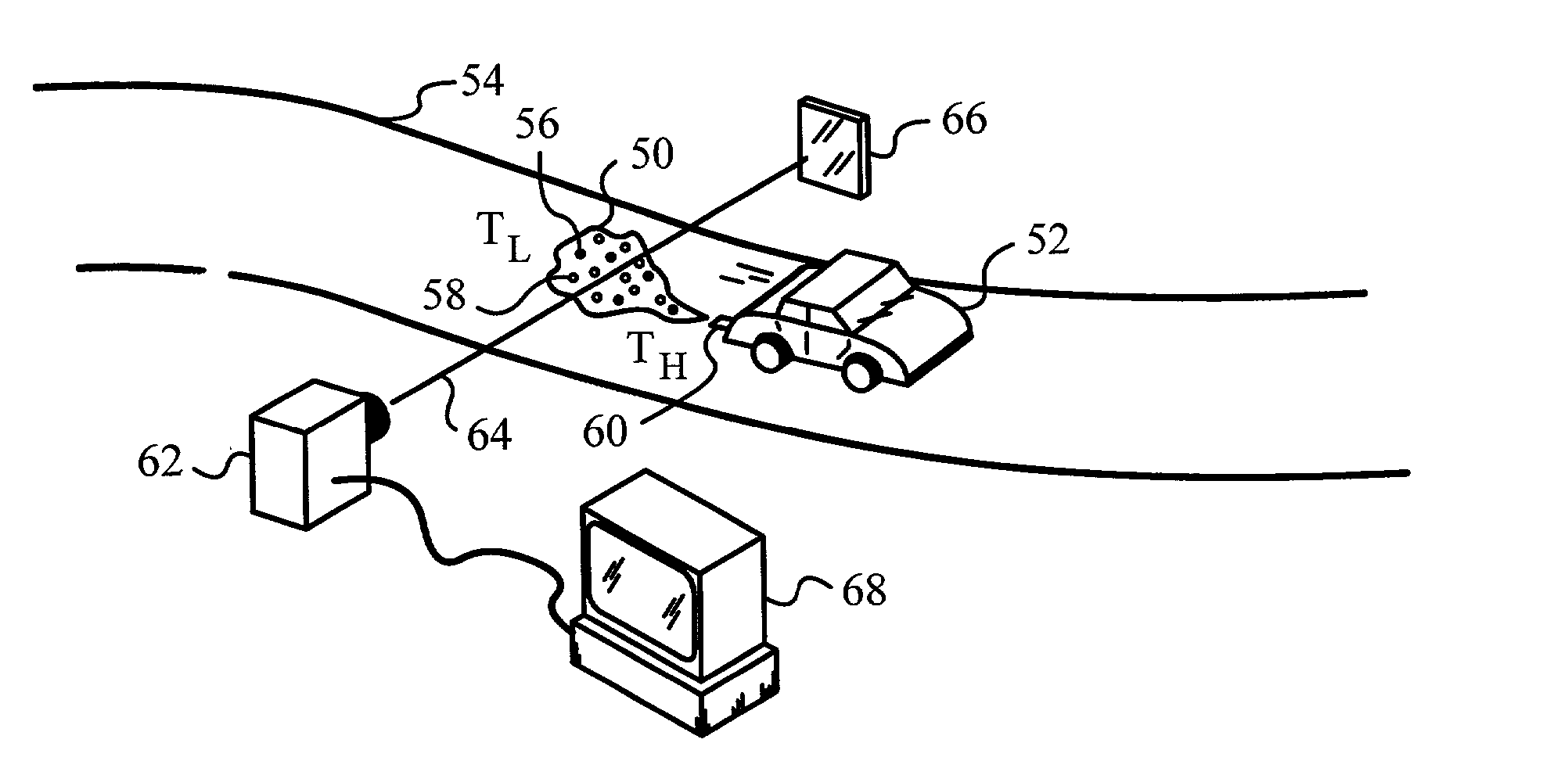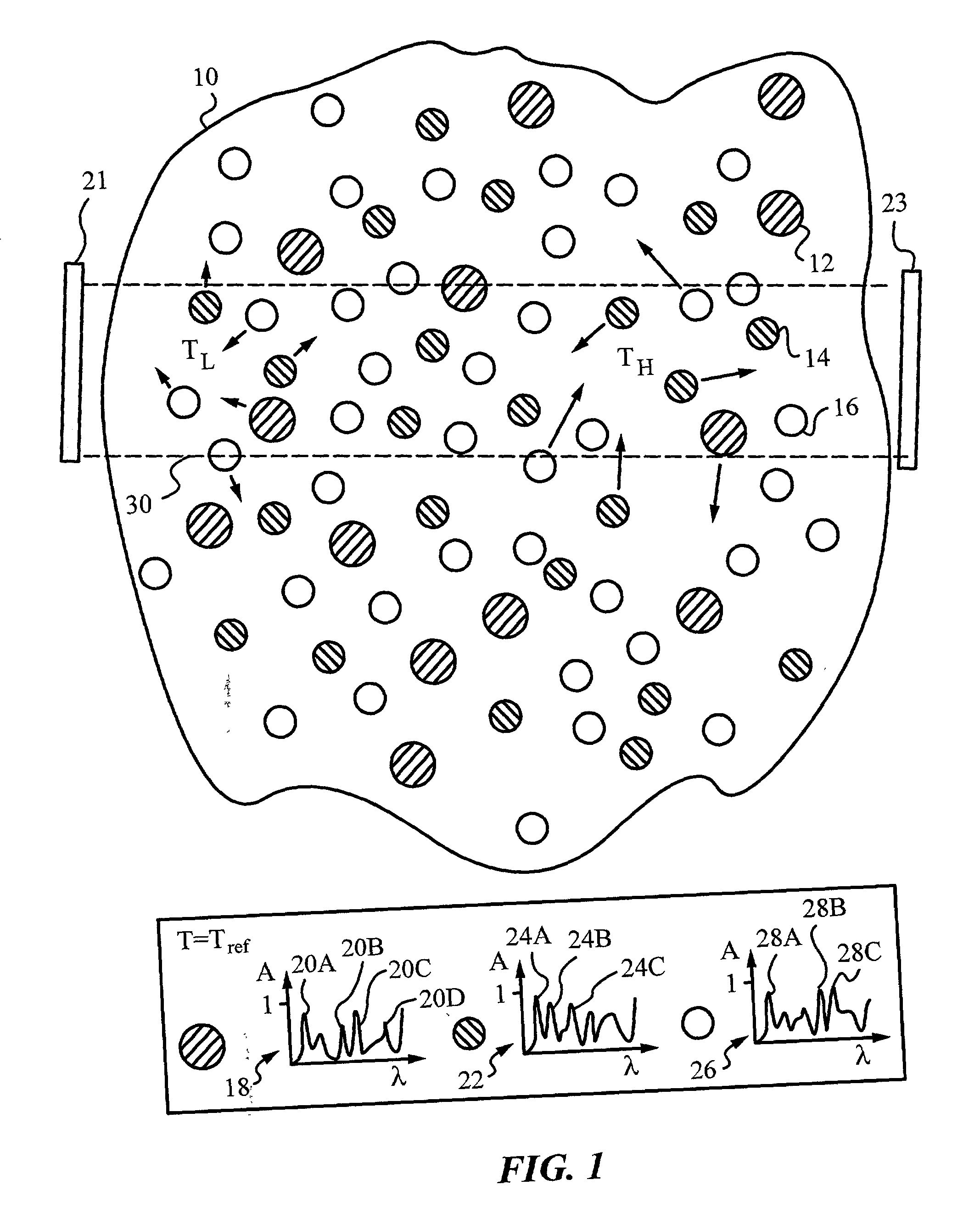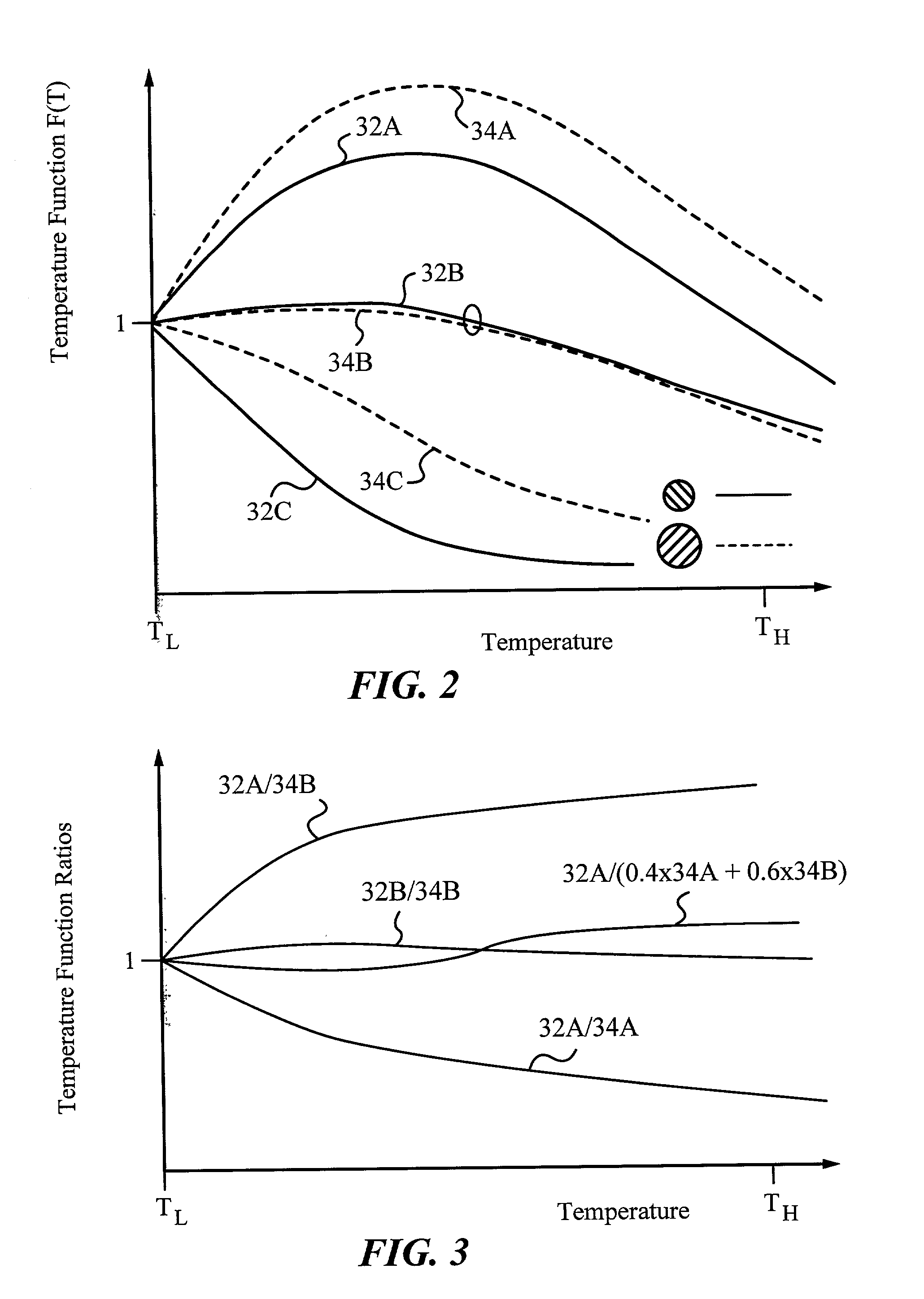Temperature-independent measurements of gas concentration
a technology of temperature and gas concentration, applied in the direction of optical radiation measurement, distance measurement, instruments, etc., can solve the problems of inability or difficulty in inability to achieve the temperature and gas composition data required by prior art methods to correct for linestrength and linewidth, and inability to achieve or achieve gas composition and/or temperature measurement. , the distribution of temperature and composition along the optical beam path is not uniform and unknown
- Summary
- Abstract
- Description
- Claims
- Application Information
AI Technical Summary
Benefits of technology
Problems solved by technology
Method used
Image
Examples
Embodiment Construction
[0031] The invention will be best understood by initially referring to the schematic diagram of FIG. 1 illustrating a sample 10 of three gases 12, 14, 16. Sample 10 may contain additional gases which are not shown for reasons of clarity. Sample 10 can be located in a closed container or it can be an open sample, e.g., it can be a volume of arbitrary shape and not confined by any container. For example, gases 12, 14, 16 can be unconstrained gases found in the ambient atmosphere.
[0032] It is despaired to determine the concentration of gas 12 in sample 10. In other words, gas 12 is selected as a probe gas. It is well known that at a specific or constant temperature probe gas 12 has a certain spectrum 18 for electromagnetic radiation, specifically the optical portion of the radiation spectrum. Spectrum 18 indicates percent absorption A along the y-axis and from this spectrum it can be seen that probe gas has several absorption peaks. In the present case a reference temperature T.sub.ref...
PUM
 Login to View More
Login to View More Abstract
Description
Claims
Application Information
 Login to View More
Login to View More - R&D
- Intellectual Property
- Life Sciences
- Materials
- Tech Scout
- Unparalleled Data Quality
- Higher Quality Content
- 60% Fewer Hallucinations
Browse by: Latest US Patents, China's latest patents, Technical Efficacy Thesaurus, Application Domain, Technology Topic, Popular Technical Reports.
© 2025 PatSnap. All rights reserved.Legal|Privacy policy|Modern Slavery Act Transparency Statement|Sitemap|About US| Contact US: help@patsnap.com



